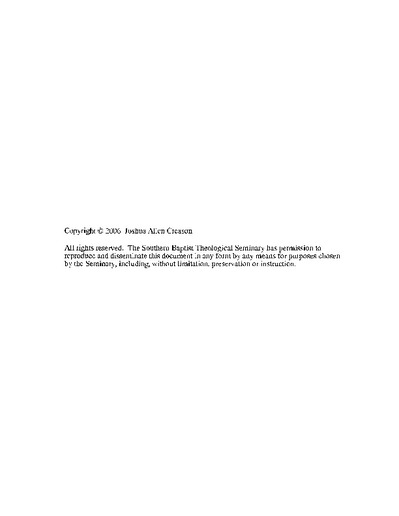An empirical exploration of the use of narrative, symbol, and ritual in creating Christian marital memorials
Subject
Marriage--Biblical teachingMarriage--Religious aspects--Christianity
Marriage customs and rites
Communication in marriage
Abstract
Among other images, Scripture uses marriage as a picture of God's relationship to his people. Scripture also prescribes numerous ways for that people to build their relationship with him. In order to give Christian marriages as many tools as possible for bolstering of the relationship, this dissertation examines narrative, symbol, ritual, and memorials as a selection of Scripture's methods for "heart writing" or relationship building. These methods correspond to various uses of the Hebrew root zakhar, for "remember."
Following the examination of Scripture's methods of "heart writing" through the use of narrative, symbol, and ritual, contemporary understandings of the physiological and neurological underpinnings for the deep internalization of relationship.
The ideas presented in the first two chapters were explored in an empirical study which found that couples who utilize more narrative, symbols, rituals, and memorials in their marriages tend to also see their marriages as more sacred and experience the manifestation of God within the marriage. Groups were also compared on levels of physiological responsiveness (skin conductance, skin temperature, and interbeat interval) as a measure of emotional engagement during an interview that lead couples in discussion of narratives, symbols, and rituals in their marriages. Husbands in marriages that utilized few narratives, symbols, and rituals were the least emotionally responsive during the interview while wives in the same type of marriage were the most emotionally responsive.
This dissertation concludes by translating some of the principles discovered into various methods of writing the marital relationship on the hearts of the individuals to build Christian marriages.

